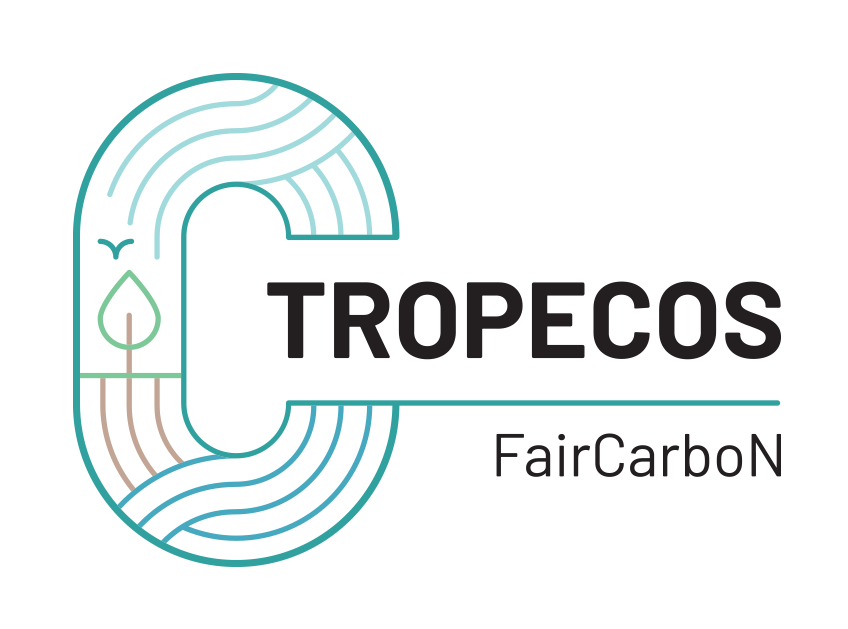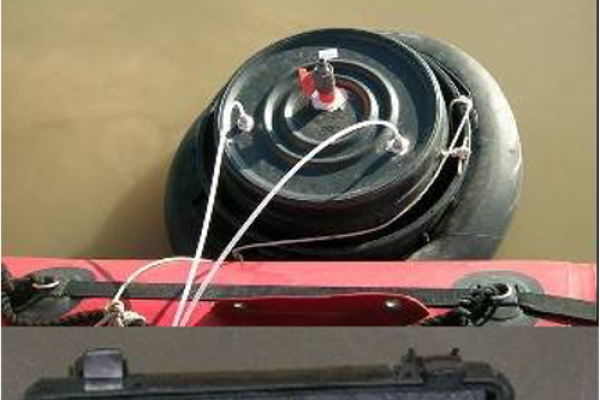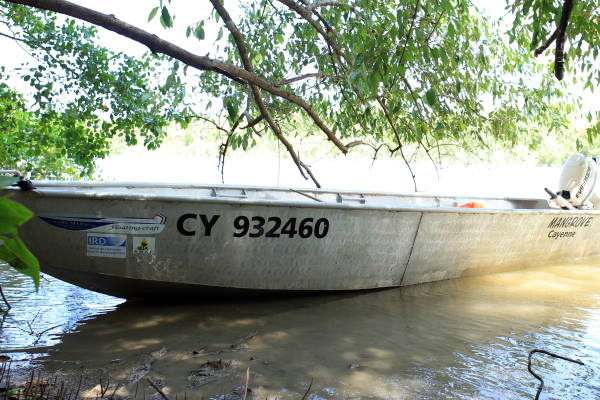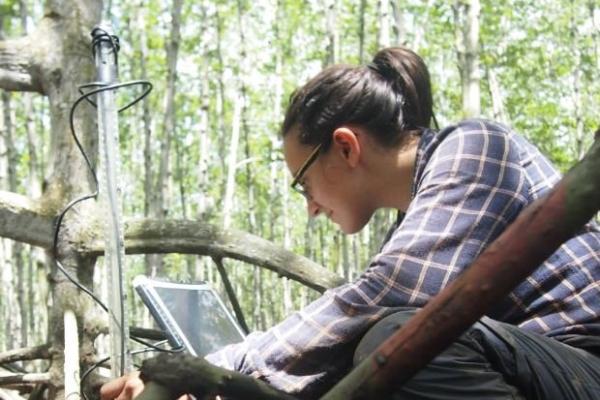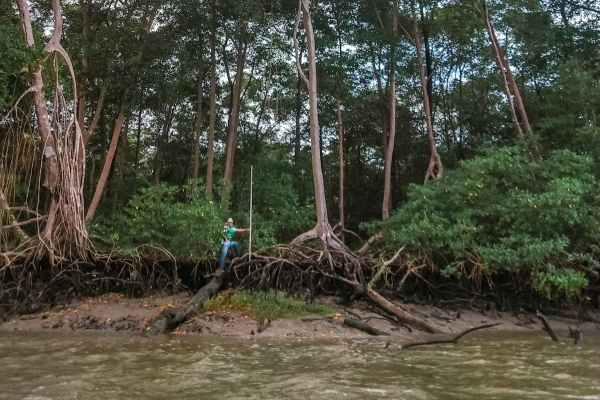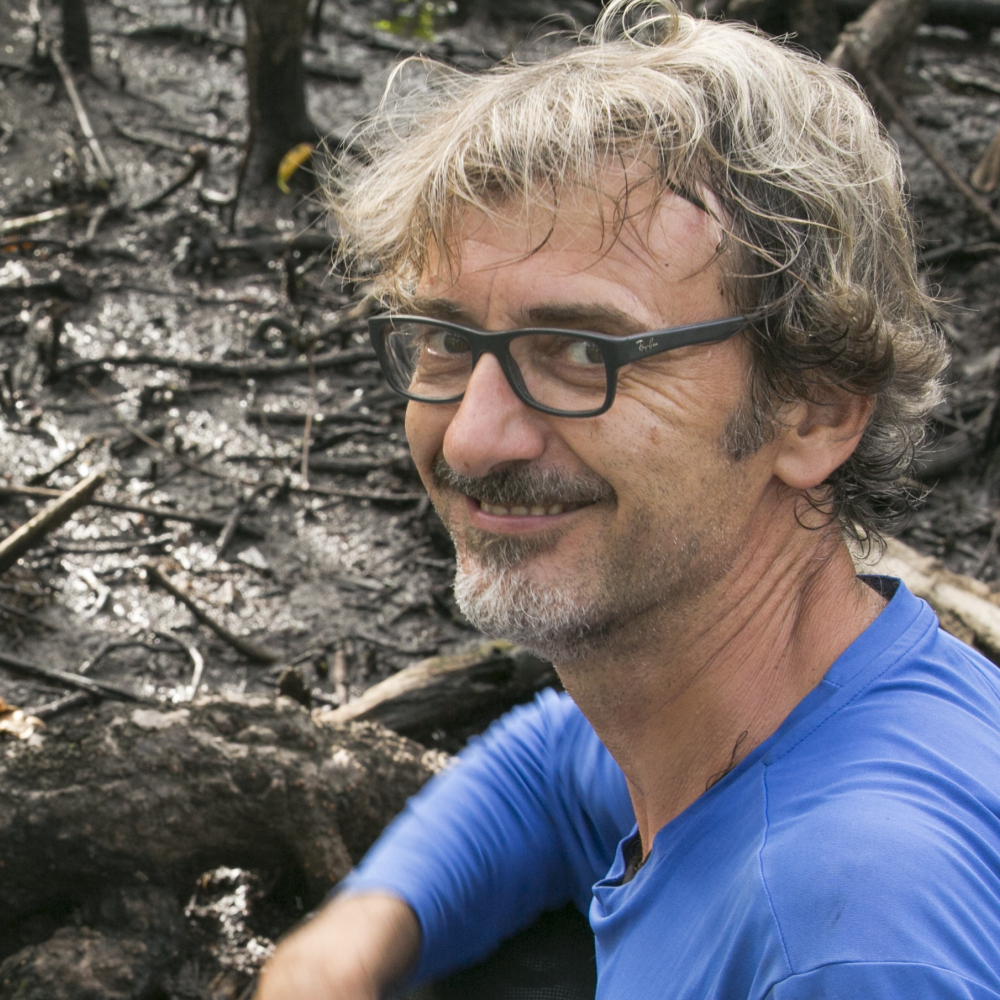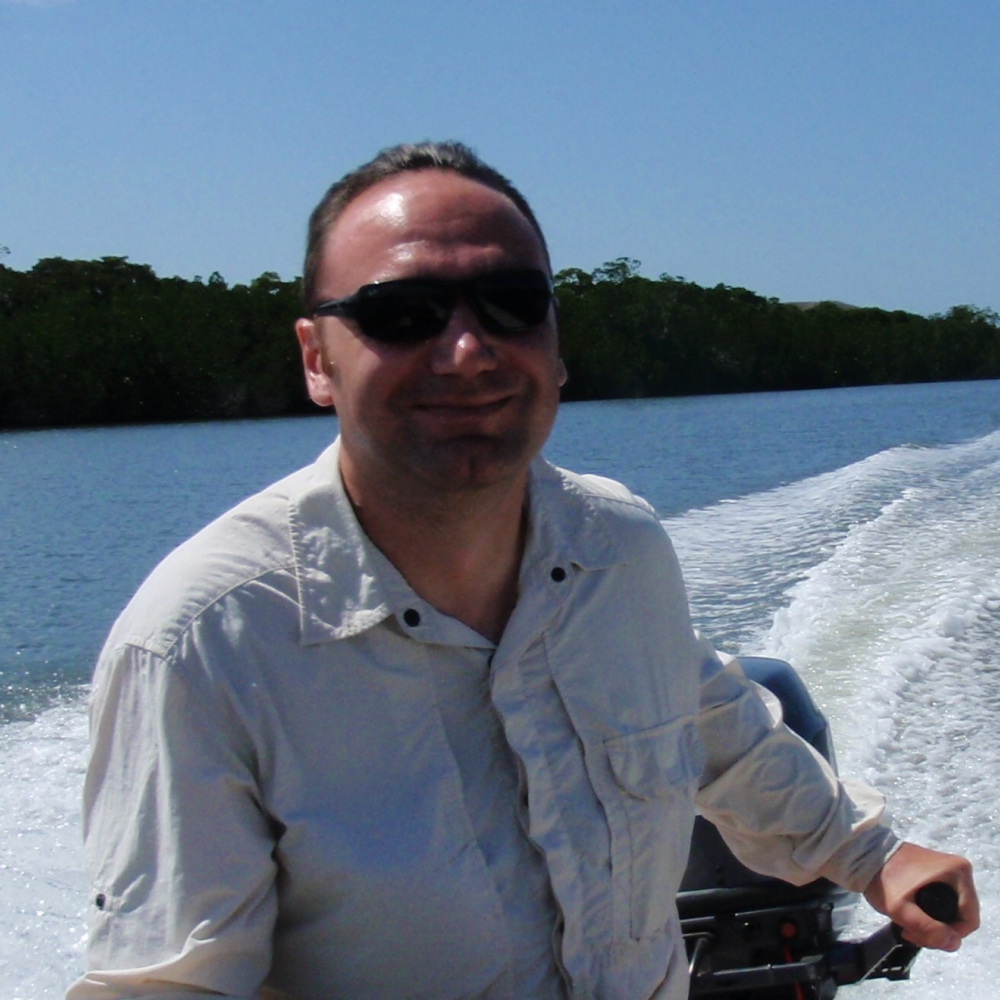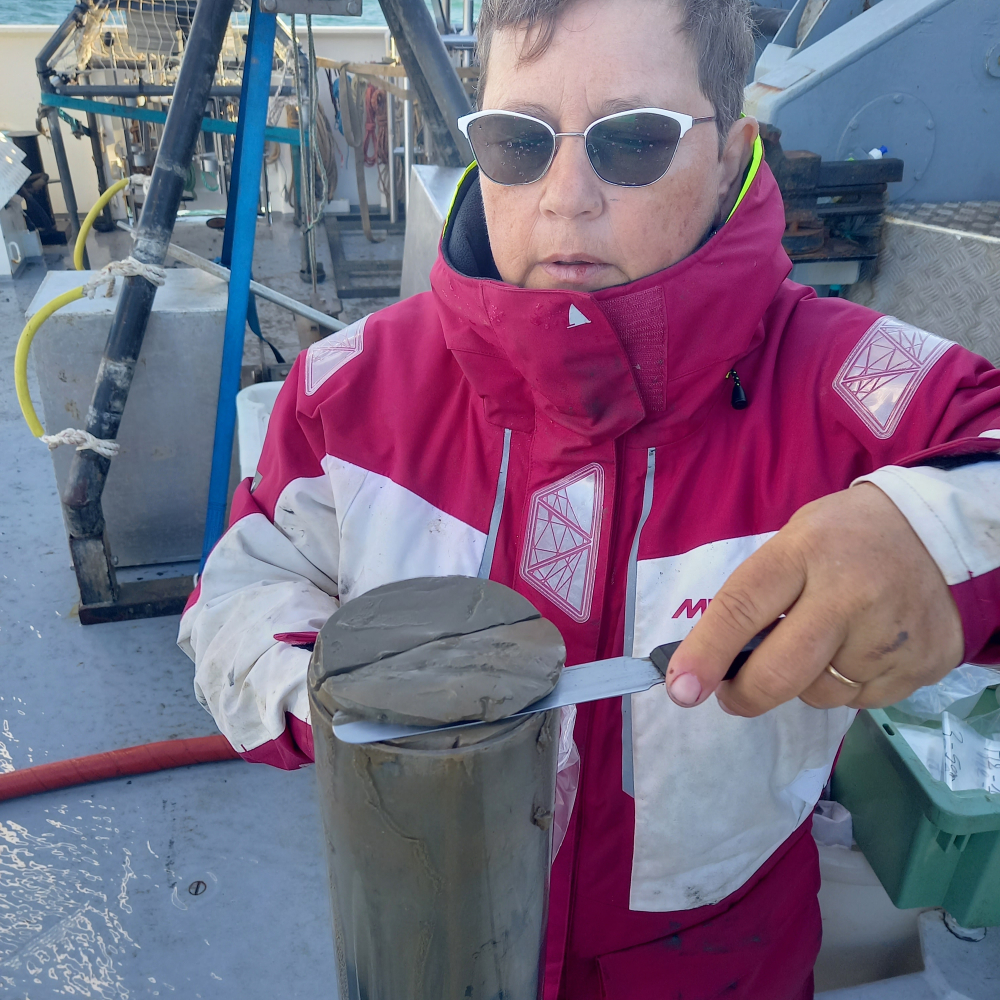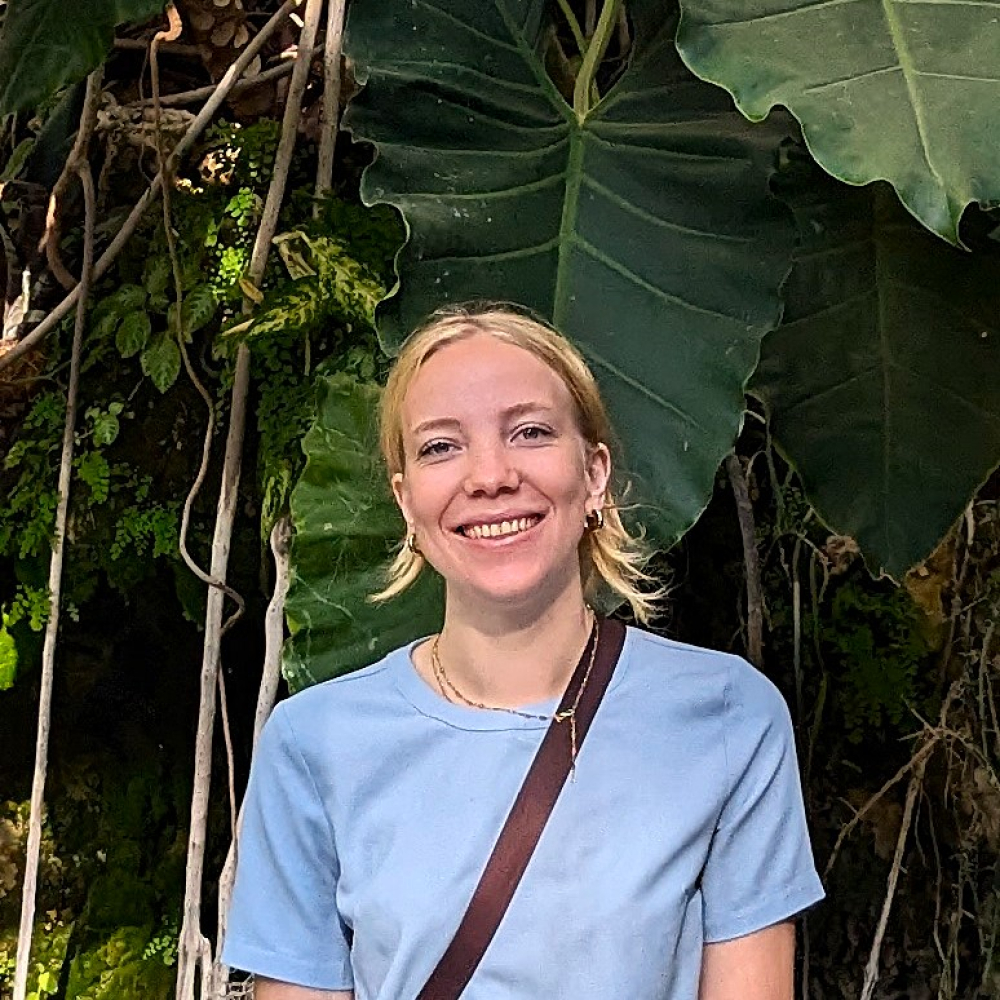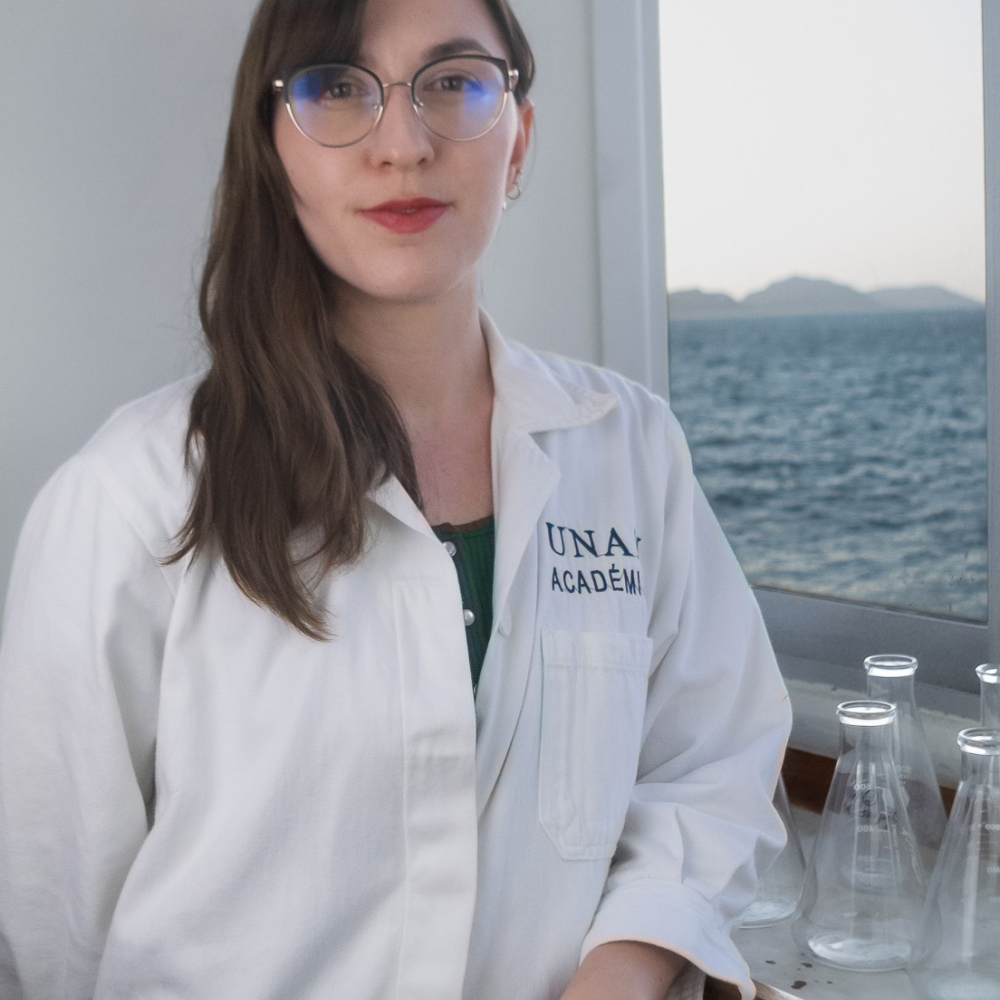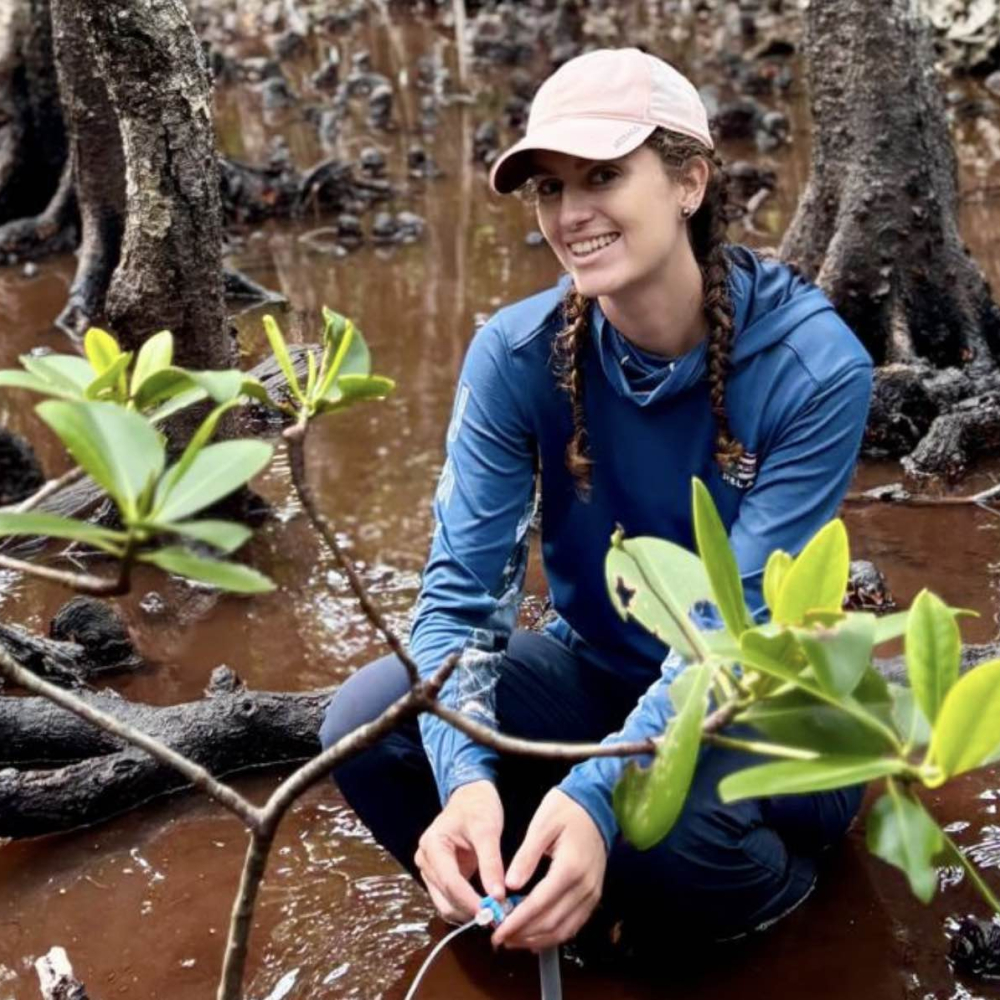The objective of WP2 is to improve knowledge on the factors that control the carbon sources and sinks in mangrove ecosystems according to their geomorphology and anthropogenic pressure. Our study sites include a large range of forest biomass, geomorphological settings, oligotrophic or eutrophic and brackish or saline conditions, under humid and semiarid climates. To reach this objective, we will apply methods to quantify height internal and external components of the net carbon balance of mangrove ecosystems.
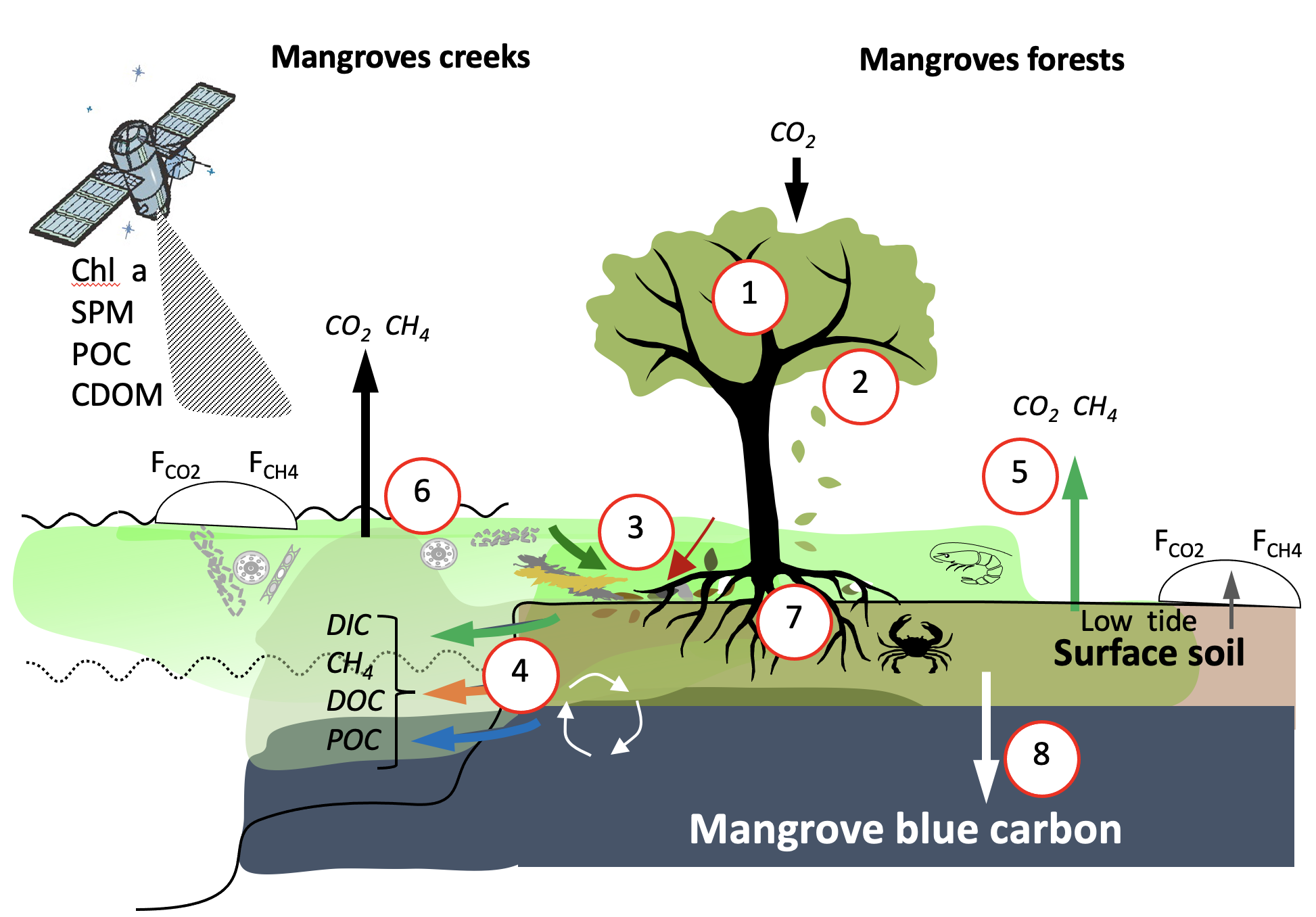
Above ground production (Flux #1) will be quantified by analyzing a time-series of high-resolution satellite images. Particulate OC deposition (Flux #3) and litter fall (Flux #2) will be estimated by deploying litter traps above the maximum water level and sediment traps on the soil floor. Tidal pumping (Flux #4) will be quantified by monitoring the evolution of DOC, POC, and DIC in soil pore waters and tidal creeks. Soil-air (Flux #5) and water-air (Flux #6) CO2, CH4, and N2O fluxes will be measured with static and floating chambers. Fine root production and mortality (Flux #7) will be quantified using minirhizotrons. Finally, SOC burial (Flux #8) will be obtained from mass accumulation rates at the multidecadal scale based on radioisotope dating of soil cores. Remote sensing observations will provide larger-scale information on the carbon exchanges between mangrove forests and surrounding waters.
